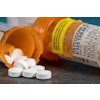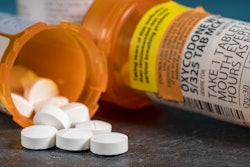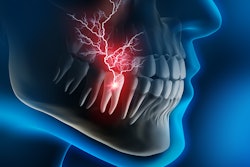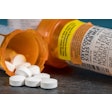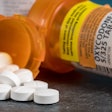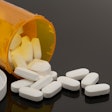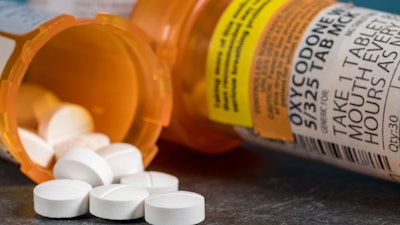
Though dental patients are less likely to be prescribed opioids today than they were a few years ago, U.S. dentists and oral surgeons in 2022 still prescribed the painkillers to millions of patients, according to a recently published study in PLOS One.
Opioids dispensed to U.S. dental patients of all ages declined 45% from 2016 to 2022, however, the rate of decline slowed substantially after the COVID-19 outbreak. Despite the decline, 7.4 million dental patients filled opioid prescriptions in 2022, the authors wrote.
“Renewed investment in opioid stewardship efforts is needed to ensure that the contribution of dental opioid prescribing to the U.S. opioid epidemic continues to be mitigated,” wrote the authors, led by Dr. Kao-Ping Chua, an assistant professor of pediatrics at the University of Michigan Medical School (PLOS One, November 2, 2023).
To better understand opioid prescribing patterns among dentists and how the rates were affected by the pandemic, researchers used data from IQVIA, a company that tracks prescriptions dispensed at 92% of U.S. pharmacies. Data from March to May 2020, when routine dental care in the U.S. stopped temporarily, was excluded.
The decline in opioid prescriptions filled by dental patients was much faster in the pre-pandemic years 2016 through 2019 compared with the rate of decline from June 2020 to December 2022, according to the study. In 2022, the annual number of prescriptions was 8.9 million, which was an approximate 45% decline from about 16 million prescriptions in 2016, the authors wrote.
From January 2016 to February 2020, the dental opioid dispensing rate declined -3.9 (95% confidence interval [CI], -4.3 to -3.6) per month. In June 2020, the rate abruptly increased by 31.4 (95% CI, 19.3 to 43.5), and the monthly decline in the dental opioid dispensing rate fell to -2.1 (95% CI, -2.6 to -1.6) per month.
As a result, 6.1 million more dental opioid prescriptions were dispensed between June 2020 and December 2022 than would have been predicted if the data trends continued with what was being tracked between January 2016 and February 2020, they wrote.
Nevertheless, the study had limitations, including that the dental opioid dispensing rate may be an imperfect measure of prevalence if the mean size or duration of prescriptions changed, they wrote.
“Opioid prescribing by U.S. dentists decreased markedly between 2016 and 2022, but the rate of decline slowed substantially after the COVID-19 outbreak,” Chua and colleagues wrote.


